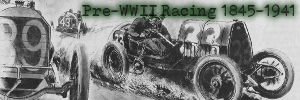















The Great Race |
|---|
 Topics: Indianapolis 500
Topics: Indianapolis 500
|
Indianapolis News
Editorial
May 31, 1911
Interesting and thrilling as was the race at the speedway yesterday, it is to be hoped that we have seen the last of these five-hundred-mile contests. The winning driver said that the limit had been reached, and that the strain on the participants was far too great. The management did everything possible to prevent accidents, and it was fortunate in escaping with only one death. There were many “close calls,” and good luck as well as good management must be credited with the comparatively happy result. With so many contestants struggling for the supremacy over a long period of time it is astonishing that there were not more accidents. Under such conditions each man is dependent for his safety, not on his own care, but on the care of all the others. This obvious fact is also emphasized by Harroun. One “daredevil” may by his recklessness kill a half dozen men.
Of course there is the theory that if men are willing to take such chances they should be permitted to do so. There are few sports that are safe, and no sport that is entirely safe seems to make any appeal to the people. Unlike other sports there is no enjoyment in this one for those who take part in it. As has been said, the strain on them is terrific. Nor do we believe that people can become accustomed to such exhibitions without themselves being somewhat brutalized.
So it seems to us that we have gone too far in this form of sport. The argument has been that these races are necessary for the development of automobiles. There is something in this theory, perhaps, when the cars are stock cars. But in such a race as that of yesterday nothing is proved except that the individual car that wins is better than the individual cars that lose, or that it has a better driver. Some weight may be given to the argument that the tests are needed for the development of the product, but the tests can be made under absolutely safe conditions. A car may be run a thousand miles and at top speed without endangering the lives of dozens of other participants in the race, for there need, for this purpose, be no race. So the contest must be considered, not as a practical commercial test, but as a sport. And thus considered, we feel that it must be condemned in the extreme form which it took in this great race.
The argument is strengthened by the fact that everything possible was done to make things safe. The management could not have been better. Every possible precaution was taken. No expense was spared to promote the comfort of the spectators. The track was all that could be asked. In every detail the efficiency of the management was shown. There could have been no better handling of the affair. And yet in spite of everything one man was killed and seven were injured. People are yet wondering how it was that the other accidents did not result in many deaths. We shall, of course, have other automobile races in the future. So we suggest that they be for much shorter distances, and with fewer contestants. The expert will take note of the fact that the troubles were mostly with the tires, and he may well ask whether there would not be fewer of these in shorter races, though to be sure the killing came early in the contest. The conclusion is that these races are not necessary to test the cars. They are simply a form of sport, and in our opinions they ought to be thus dealt with. The sport should be made as safe and as little brutalizing as possible.
